Ranked: the best Nikon cameras ever
Who are the Nikon Z9's landmark predecessors?
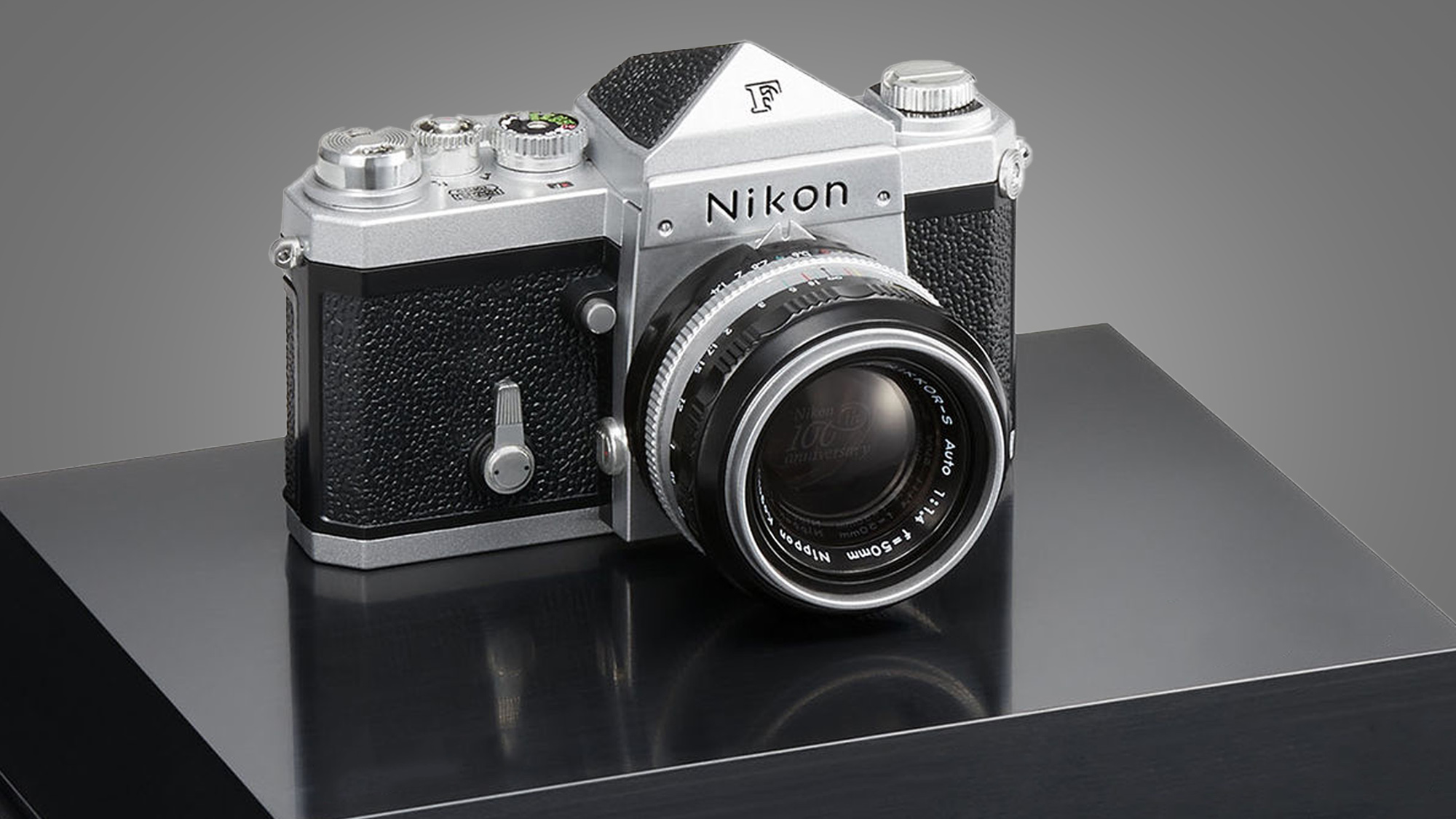
Nikon is back. With the launch of the Nikon Z9, the most powerful camera in its history, the camera giant has again reasserted itself in its new mirrorless battle with Canon and Sony. But what exactly is the Z9's family history, and who were its influential forebears?
The Z9 is today’s crown jewel in a Japanese company that was formed way back in 1917 and whose westernized name Nikon was established in the 1980s. From its early days dabbling with S-series rangefinders in the 1950s to focusing efforts on its SLR line of cameras – a move that established Nikon among professional photographers ever since – Nikon has been a consistent presence. For decades, it's been making some of the best cameras for photography.
But it isn't just a story of photographic innovation. After all, innovation doesn’t necessarily translate into long-term success – just ask the likes of Minolta and Kodak. Wait, you can’t. It’s probably fair to say that Nikon hasn't been a big innovator, with a more recent tendency to arrive late to the party. Yet it is a company that has remained a key player in the camera industry for multiple decades. How?

When you look back at the history of Nikon's best cameras, what’s consistently striking is how Nikon appears to patiently assess the best existing technology around, then develop, refine and compile it into some of the most compelling and capable cameras available. Then arrive at the party at five-to-midnight with a bang.
A classic example is its move to mirrorless, and now the Nikon Z9. Its first all-purpose, professional-level hybrid mirrorless camera is revolutionary and immediately challenges other leading cameras like the Sony A1 and Canon EOS R5. Thanks to its latest firmware update, it arguably eclipses both of them.
But what are its spiritual predecessors? We’ve put our collective heads together to compile a list of the best and most important cameras of this illustrious company’s 100-year-plus history, starting with the most important. Further down, you can also find some honorable mentions that highlight some fascinating collaborations that also deserve a mention. But first, that (perhaps controversial) top ten...
The best Nikon cameras ever
1. Nikon F (1959)
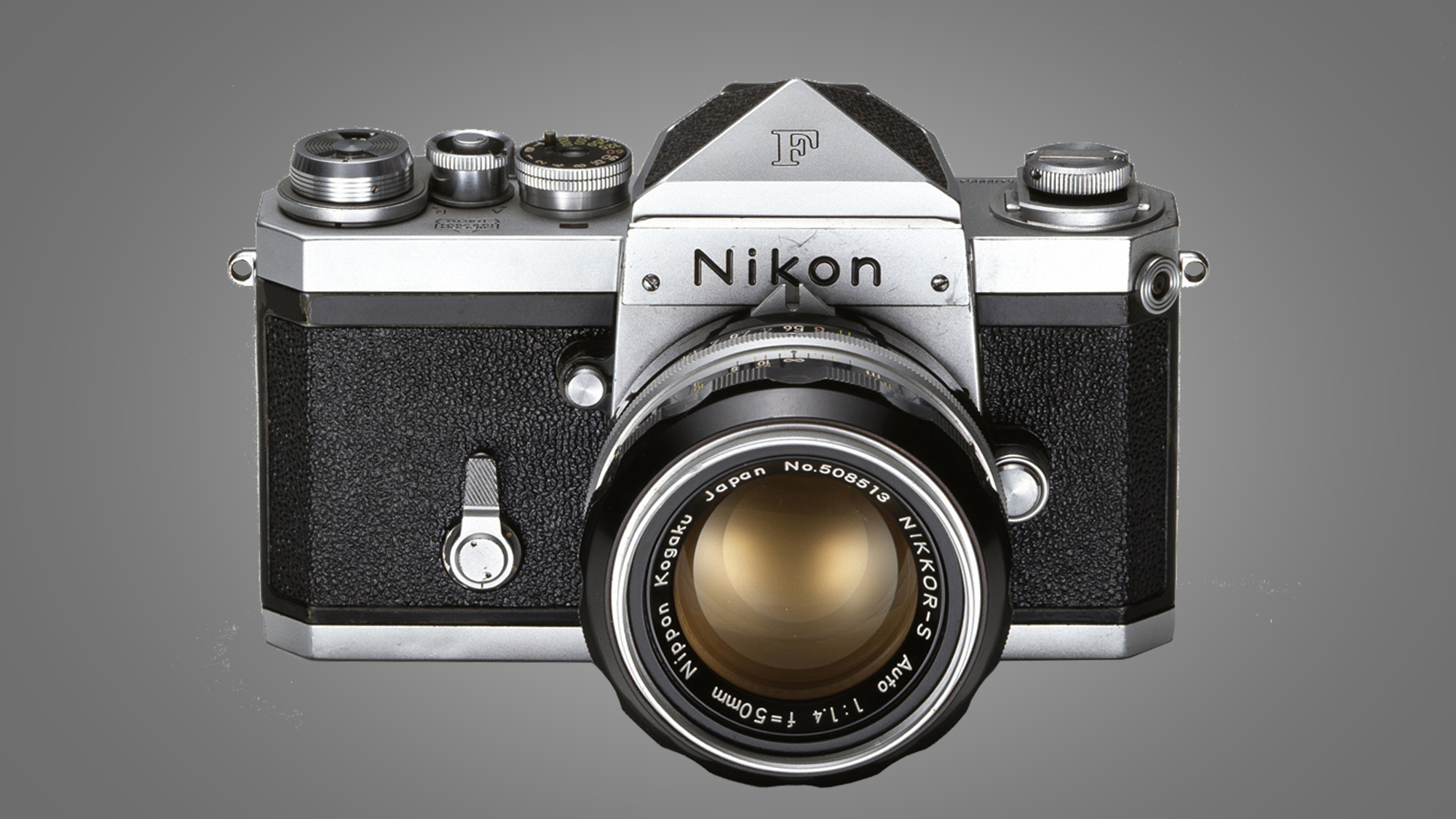
- Why it's a classic: it was Nikon's watershed moment
In a time when most professional photographers had a Leica or Zeiss rangefinder in hand, Nikon launched its first SLR camera to market, the Nikon F. Was the Nikon F a new concept? Not entirely. But what the camera did was bring together all the best technology available at the time into a single, more affordable modular camera system.
Sign up for breaking news, reviews, opinion, top tech deals, and more.
It became the definitive 35mm camera of the era and established the SLR as the future. Over 14 years, almost one-million Nikon F units were made, plus it was superseded by more advanced models over the following decades, during which Nikon enjoyed a virtual market dominance until the autofocus era. Every existing Nikon SLR, DSLR and mirrorless camera since has taken some design cues from the Nikon F.
Famously used to cover everything from the Vietnam war to NASA space programs (the F-Mount is the only ever lens mount used by NASA), the Nikon F is a reliable, bullet-proof modular 35mm camera with interchangeable screens and prisms, meaning it could be retrofitted with the latest tech, including advances in metering. Its features include a focal plane shutter with speeds up to 1/1000 sec, depth-of-field preview, flash sync, a removable back for 36 and 250-exposure reels, while its 60+ year-old F-Mount survived into the digital era. When we think of Nikon, this is where things truly began.
2. Nikon Z7 (2018)

- Why it's a classic: it set the wheels in motion for Nikon's mirrorless future
Coming almost 60 years after Nikon's watershed SLR moment that introduced the Nikon F and its F-Mount for lenses, the company well and truly marked its mirrorless future with the twin launch of the Nikon Z7 and Z6. Featuring its first new lens mount since the SLR days (asides from a brief foray with the Nikon 1-mount with 2.7x crop factor), Nikon’s Z-mount is the most versatile full-frame lens mount available today thanks to its wide diameter and short flange distance.
The Nikon Z7 was the best specced Z-series camera at launch, offering the same 45MP resolution as the Nikon D850, plus many mirrorless benefits that include in-body image stabilization (IBIS), an EVF with real-time exposure information, new autofocus modes including Eye AF, a more versatile 4K video capture experience and silent shutter, all in a more compact body with great form factor.
Not only is the Z7 is one of the most comfortable cameras in the hand, its Z-series lenses also perform better than F-Mount lenses for edge-to-edge clarity, better control over lens distortion and sharp detail at maximum aperture. For Nikon, the future is Z.
3. Nikon D1 (1999)
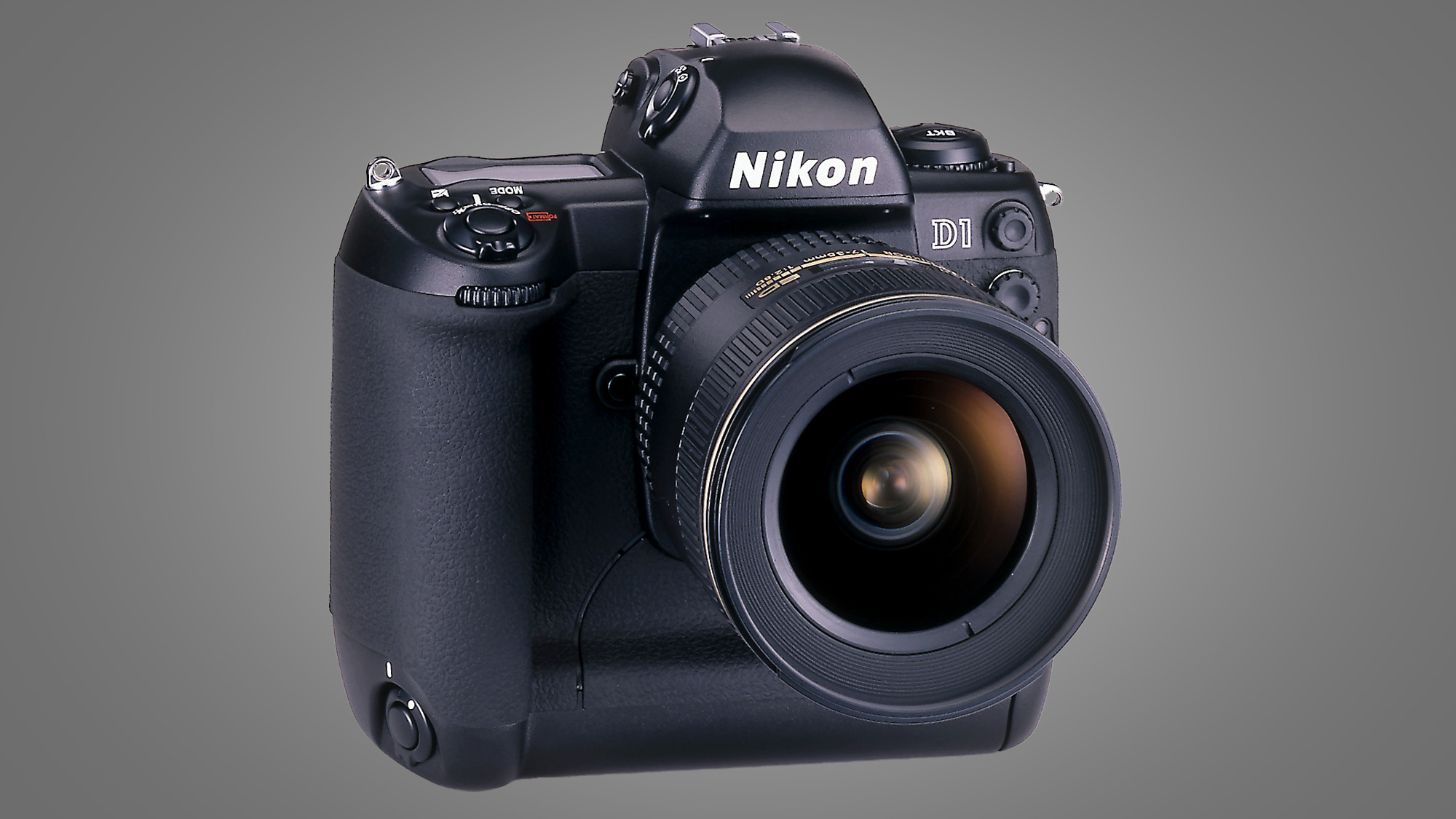
- Why it's a classic: digital life truly began here
The true digital camera pioneer was Kodak, but the Nikon D1 marked Nikon’s attempt to challenge Kodak’s professional DSLR dominance, proving to be a milestone in the development of pro DSLRs. Its design and controls were closely based on the Nikon F5, making the transition from film to digital as easy as possible for professional photographers. Nikon’s F-mount for SLR was maintained in the D1 too, meaning photographers could bring all of their F-mount glass along for the ride and into a new digital era.
Features-wise, the D1 packed a 2.7MP DX-format CCD image sensor, a maximum burst rate of 4.5 fps, 256-segment matrix metering, a snappy five-area multi-cam autofocus system, and shutter speeds up to 1/16,000 sec. Images were recorded onto removable Compact Flash media with a maximum 2GB capacity.
Although much cheaper than Kodak’s DSLRs, the D1 was a lot more expensive than the pro-film cameras like Nikon F5, nor was its resolution any match. However, despite digital’s humble beginnings, its speedy workflow was the way forward for photo-journalists.
4. Nikon F5 (1996)

- Why it's a classic: It's Nikon's definitive SLR
Even in the early digital years, the Nikon F5 held its own and was the basis from which Nikon designed its DSLRs to make that film-to-digital transition as simple as possible – just look at the striking resemblance.
While digital was inherently more expensive and finding its technological feet, the F5 could still offer professional action photographers 8fps and a maximum 1/8000 sec shutter speed. We wouldn’t see that kind of performance or the 35mm sensor format in the digital world until the launch of the Nikon D3, which was probably the nail in the coffin for film SLRs in the high-speed photojournalism world.
Advances over the F4 included a new 5-point autofocus, and Nikon’s 3D color matrix metering and support for vibration reduction in Nikon’s newer lenses. The F5 was truly the SLR heyday for action photography.
5. Nikon Z9 (2021)
- Why it's a classic: it's Nikon's most powerful camera ever, by some distance
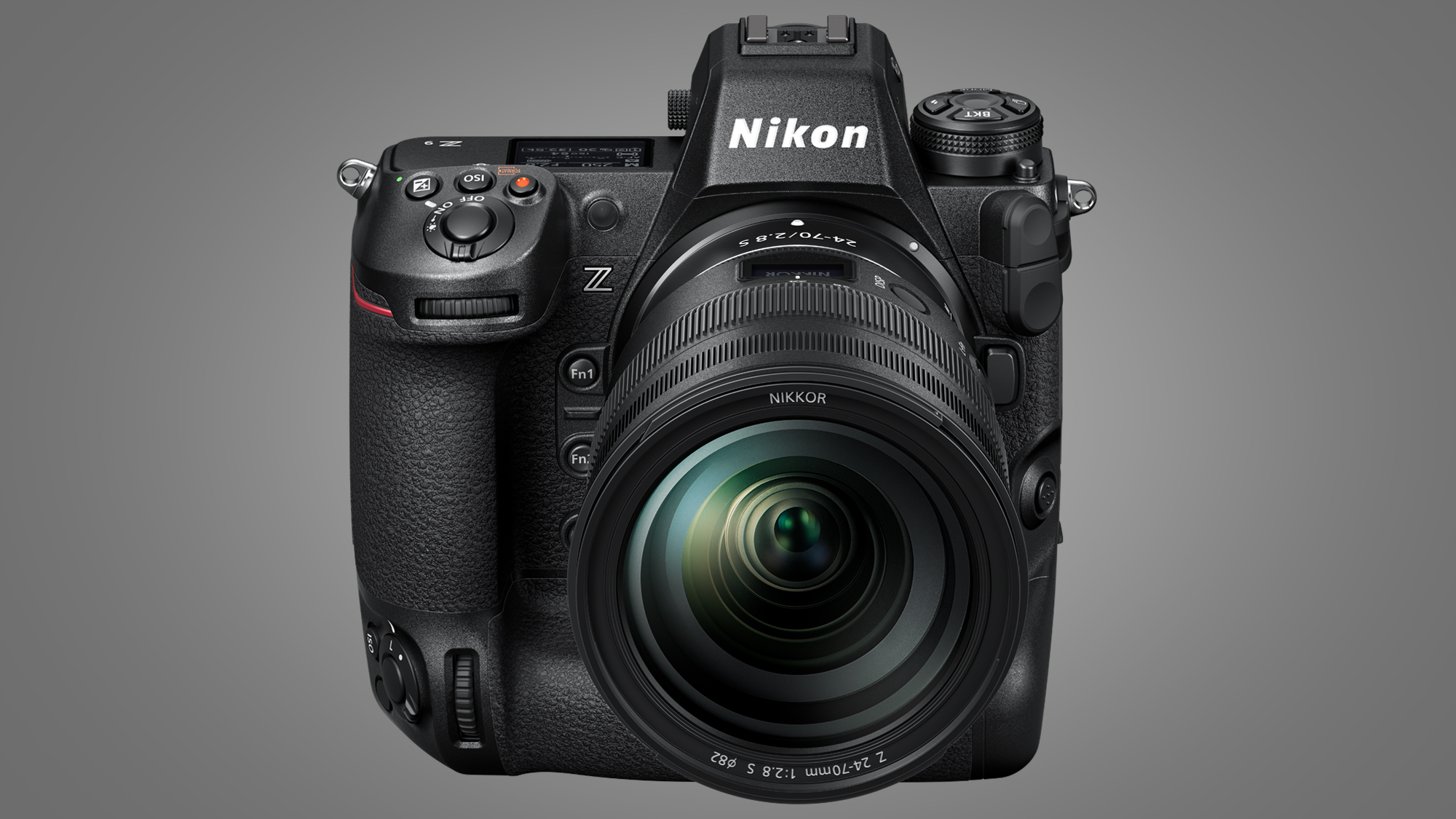
Recently awarded five stars in our full Nikon Z9 review, the Nikon Z9 is the first professional mirrorless camera by Nikon for action photographers. The features are too many to list here, but highlights include the 45MP full-frame sensor with 20fps continuous shooting (up to 120fps in JPEG only), plus 8K internal video recording up to 60fps. The Z9 retains the look, feel and durability of Nikon’s flagship DSLRs, meaning it is well-suited to the long lenses that will no doubt be attached.
One of the more intriguing design choices is the absence of something – the Z9 ditches a mechanical shutter. The best-ever performance and speed of the processor and sensor read-out tackles the last remaining drawbacks to an electronic shutter: rolling shutter.
Paving the way for total reliance on a comprehensively quicker electronic shutter, this revolutionary mechanical-shutter-less hybrid camera serves any kind of image maker. Once again, Nikon smashed it out the park with the first in a new line of mirrorless cameras and the Z9 redefines an all-purpose camera. It's undoubtedly one of the best cameras for photography, and will be for some time.
6. Nikon D70 (2004)
- Why it's a classic: it brought digital SLRs to the masses

Nikon's first truly consumer DSLR, the Nikon D70 launched a nickel under $1,000 /£1,000 and competed directly with the Canon EOS 300D, while undercutting Nikon’s own D100 by some distance despite offering many of the same features.
Not only was it lighter and more compact than the D100, but the D70 also offered the 6.1MP APS-C sensor with raw and JPEG capture, 3fps continuous shooting, and an ISO range of 200 to 1600 with auto function.
Prior to the D70, Nikon’s DSLRs were only really handled by professional photographers. Now, digital technology was in the hands of many.
7. Nikon S (1951)
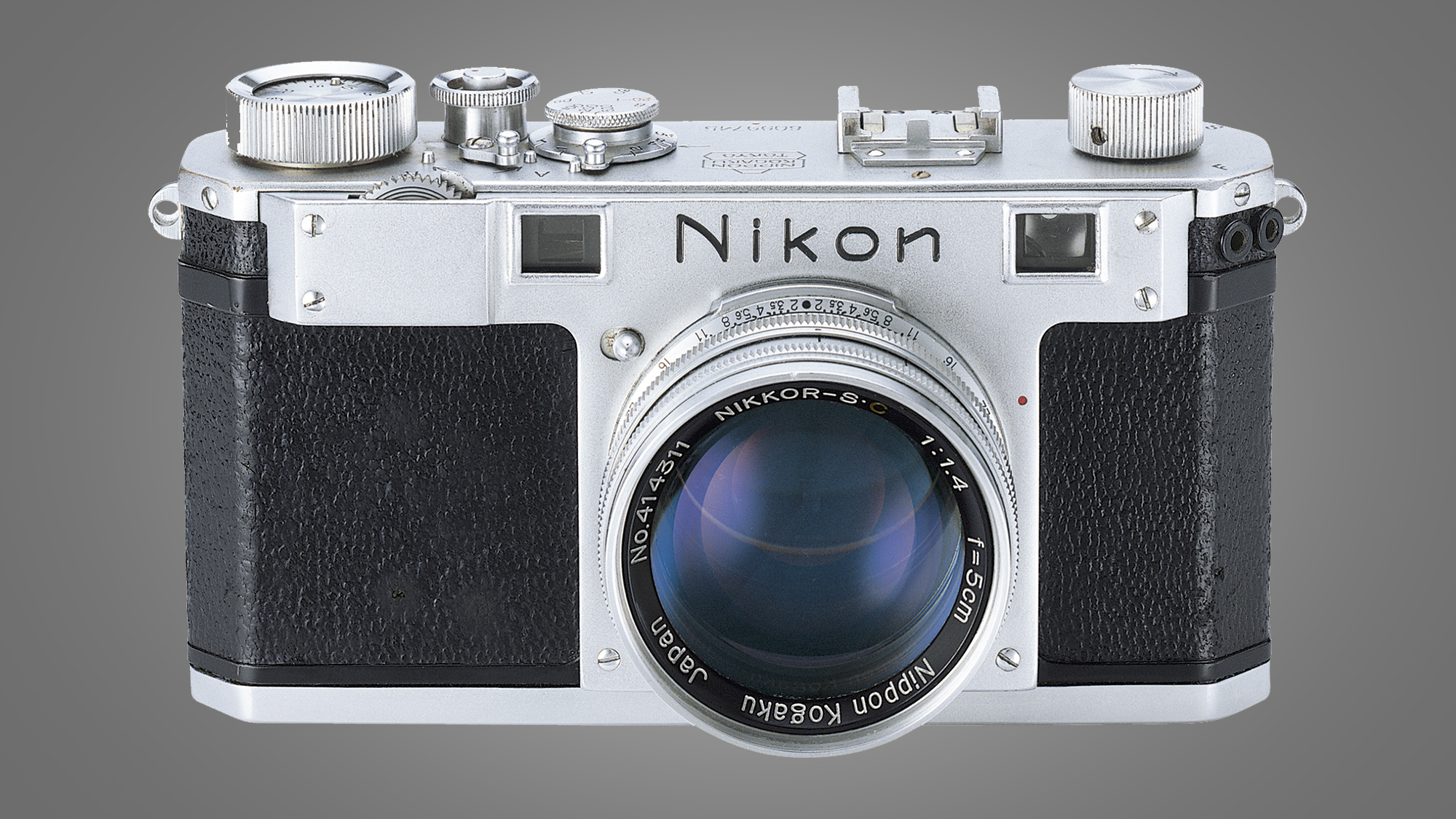
- Why it's a classic: the first Nikon rangefinder to hit the world stage
We’d be remiss not to include a Nikon rangefinder in this list. And the Nikon S is the most obvious choice, being the first to hit the world stage – even though the Nikon SP was the closest Nikon rangefinder camera to challenging Leica’s dominance among photojournalists.
Like the Nikon I and Nikon M, the design of the Nikon S was influenced by Contax and Leica rangefinders, combining what Nikon believed to be the best elements of both. However, the Nikon S was the first to feature the 35mm format and enjoy Nikon’s excellent S-Mount lenses, which were widely acclaimed to better the significantly more expensive Leica glass available at the time.
The later versions of the Nikon S series rangefinders released throughout the 1950s influenced the design of the Nikon F SLR that would appear in 1959, sharing the same basic body configuration.
8. Nikon D3 (2007)
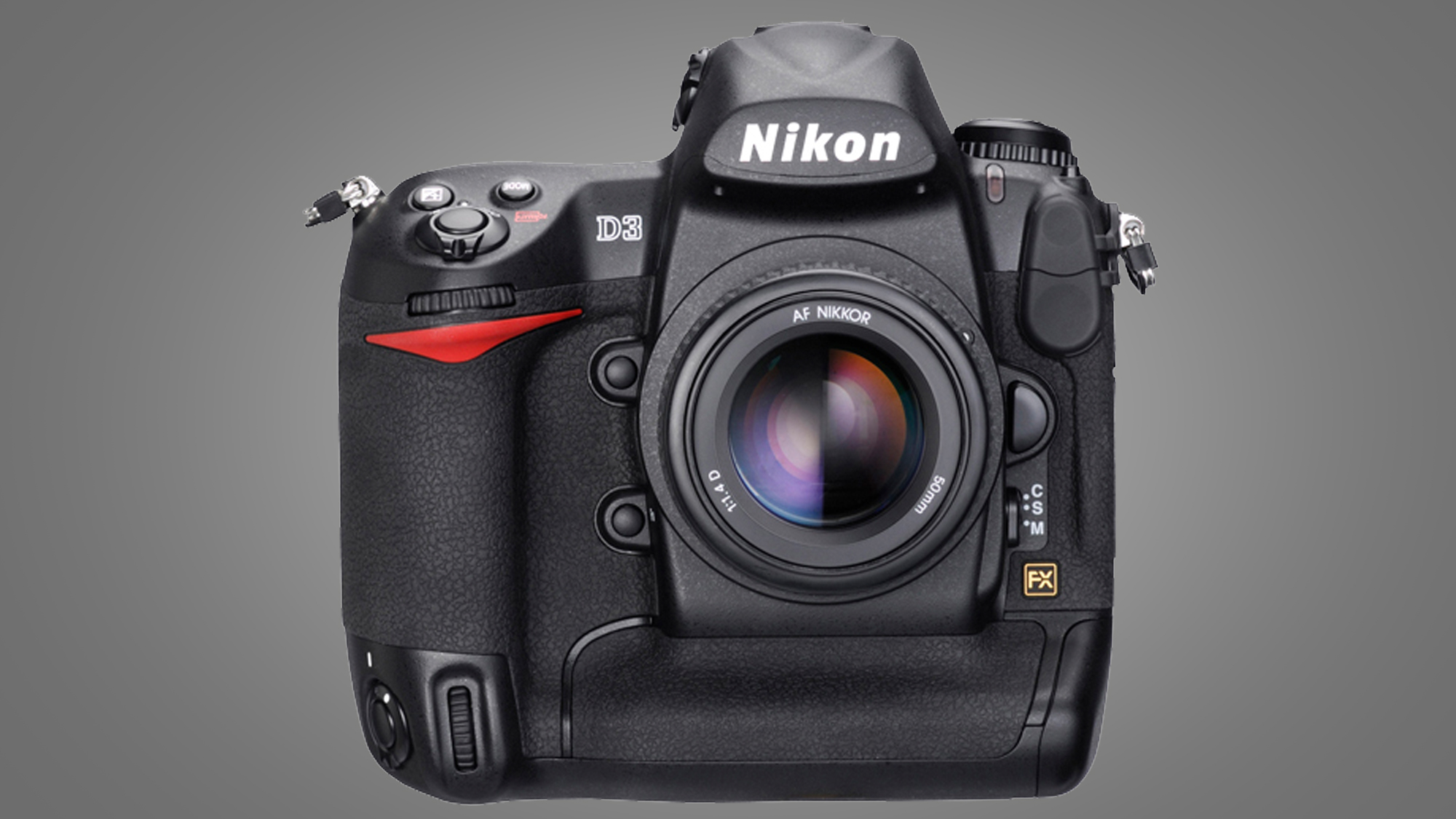
- Why it's a classic: it's where digital full-frame began
In the early 2000s, professional Nikon photographers were growing impatient in the wait for a high-performance auto-focus full-frame camera to match what Canon had brought to the table through its SLRs and then through the digital EOS 1Ds in 2002. Five years later, in steps the Nikon D3, the company's first full-frame DSLR.
It emphatically established a Nikon series of digital cameras that were designed for professional action photographers. And for the following 15 years we could be sure that a swathe of Canon and Nikon cameras with long lenses would be packing the sidelines at major events and capturing critical moments in news and sporting history.
Sitting pretty as the flagship Nikon DSLR, the D3 has since been succeeded by the D3X, D3S, D4, D5 and D6, all of which have delivered Nikon's best camera technology at the time (save for pixels). Yes, back in 2007, the D3 was a powerhouse of a camera, built to withstand harsh environments and deliver high-end performance. The new sensor had a 12MP resolution and an outstanding low-light performance with maximum ISO 25,600 sensitivity. Action photographers could also enjoy rattling off high-speed continuous bursts up to 9fps, plus live view was debuted, too.
9. Nikon F4 (1988)
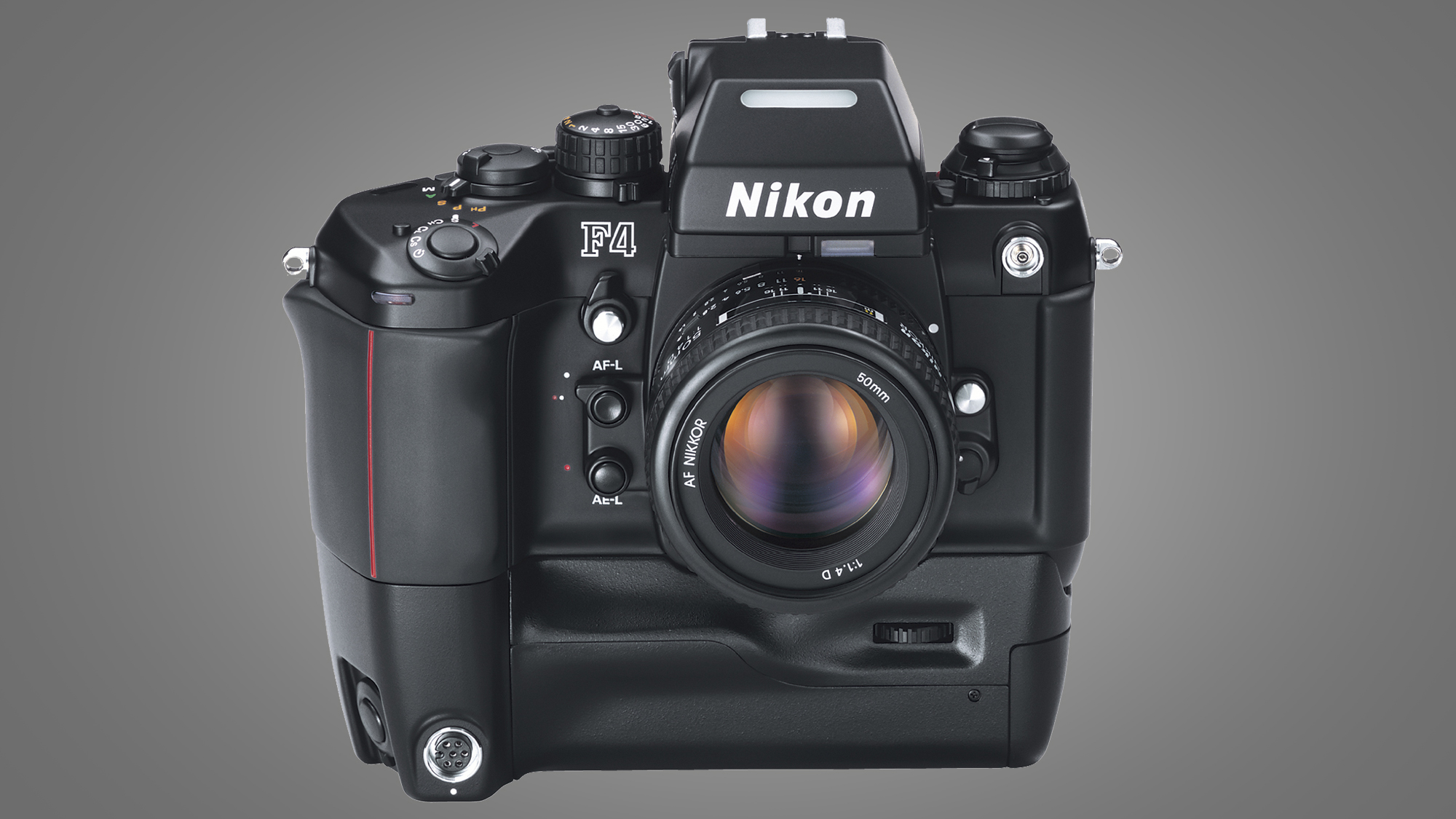
- Why it's a classic: it was the first recognized SLR with AF
In the mid 1980s, Minolta shook up the SLR scene with the first autofocus SLR, the Minolta 7000 AF. It was the first real challenge to Nikon’s SLR dominance, and so came the response. Introduced in 1988, the F4 was Nikon’s first professional 35mm SLR camera with autofocus – a single-zone phase-detection system. A new vertical mechanical shutter also made for a quieter shutter action.
Designed by Giorgetto Giugiaro, who is synonymous with Nikon’s red stripe, the fully electronic F4 was also the first Nikon with optional battery packs that featured a vertical grip and controls for shooting in portrait format. Replacing the F3, the Nikon F4 ditched the manual film advance lever for a high-speed future, though maintained past F-mount lens compatibility with matrix metering.
Depending which battery pack was attached, the continuous high-speed shooting ranged between 4fps and 5.7fps. There were also custom-designed F4s for special collaborations (see below).
10. Nikon D90 (2008)
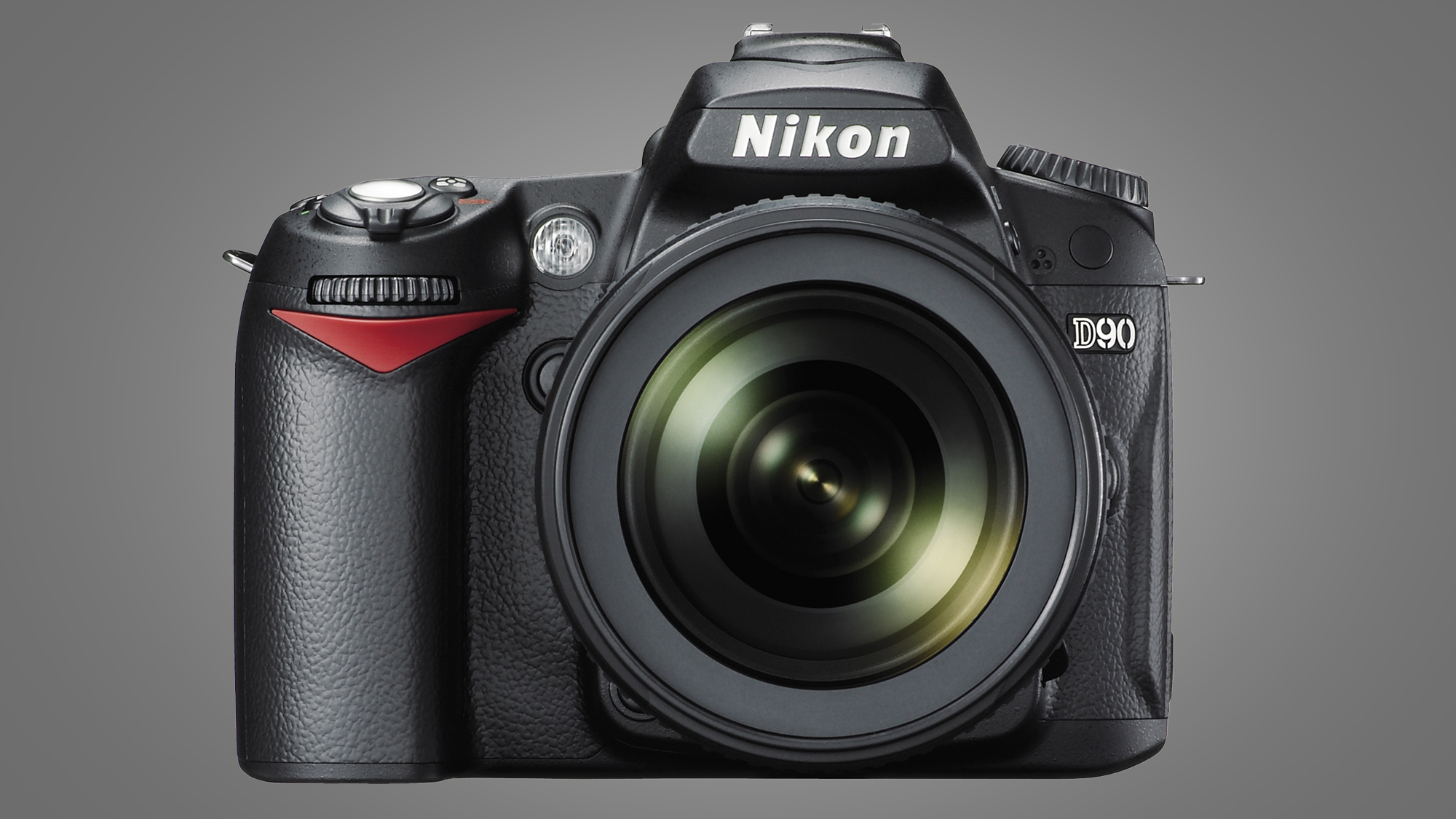
- Why it's a classic: the dawn of hybrids – the first DSLR with video recording
A lesser-known fact is that the Canon EOS 5D Mark II was not the first DSLR with HD video recording capabilities. No, that honor goes to the unsung Nikon D90. By intent or accident, creating a primary stills camera that could also shoot video proved a revelation. What caught the imagination of video creators on a budget was the image quality and control over depth of field that a large-sensor interchangeable-lens camera like the D90 offered, especially when compared to the small-sensor dedicated video cameras of that time.
Used to shoot the feature-length film 'Reverie', the D90 was launched in August 2008 (a month before the 5D Mark II) as Nikon's mid-tier consumer DSLR. The APS-C format camera's video spec includes live view, HD 720p video capture at 24 fps, mono sound and manual focus. Stills photographers could enjoy a 12.3MP sensor with sensitivity settings that extended up to ISO 6,400 and a burst rate up to 4.5fps.
Yes, the hybrid D90 inadvertently changed a big part of the camera market forever. Today, most big camera players are focusing their energy on hybrid, and most buyers expect a camera to satisfy both photo and video needs.
Special mentions
Camera makers can be influenced and challenged by competing brands, but sometimes magical things happen when they combine forces. Here are two of Nikon's best collaborations...
Nikon / Kodak NC2000 AP (1994)
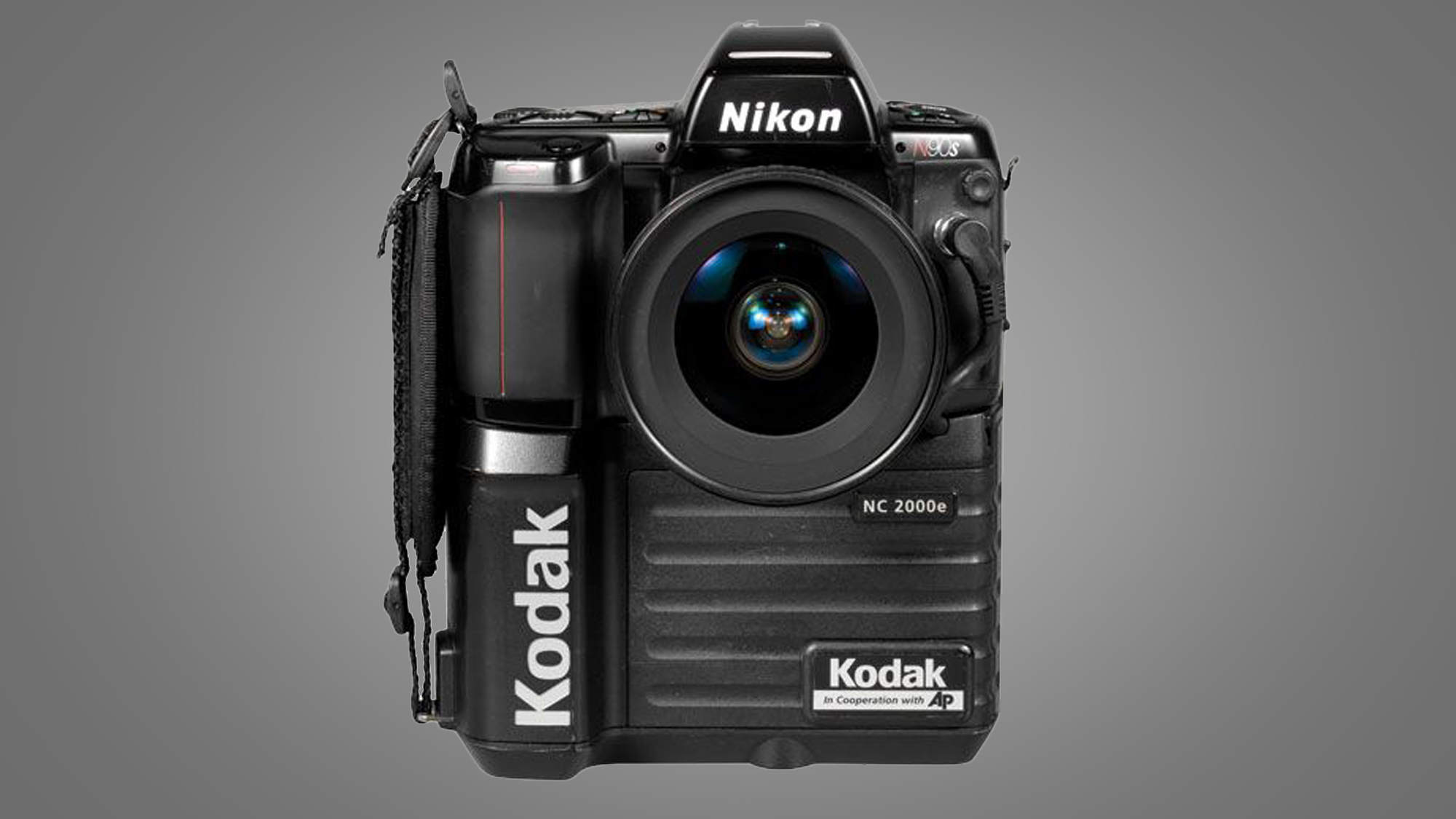
- Why it's a classic: it paved the way for removable digital media
Did you know that there was a collaboration between Nikon and Kodak to design a photojournalist’s camera for the Associated Press Agency (AP)? Referred to as either the Kodak or Nikon NC2000 AP, the $17,950 camera fused the existing Nikon N90 body and Kodak's NC2000 digital back. The N90 was a known entity, while the NC2000 introduced a 20.5 x 16.4mm, 1.3 MP M3 Bayer-pattern CCD image sensor with ISO 200-1600 sensitivity settings and, crucially, stored its images on removable Type III PCMCIA (PC) cards.
Yes, removable digital media was the NC2000’s most important innovation. The photographer could hand off a full card, insert another, and carry on shooting. Of course, we take removable digital media for granted today, but in 1994 it proved a revolutionary workflow for press photographers and news agencies.
Despite its bulk – a whopping 7in tall and 1.6kg heavy – plus its grainy detail especially at high ISOs, the instant turnaround of images firmly established the NC2000 AP as the professional's choice of DSLR.
NASA Nikon F4 Electronic Still Camera (1991)
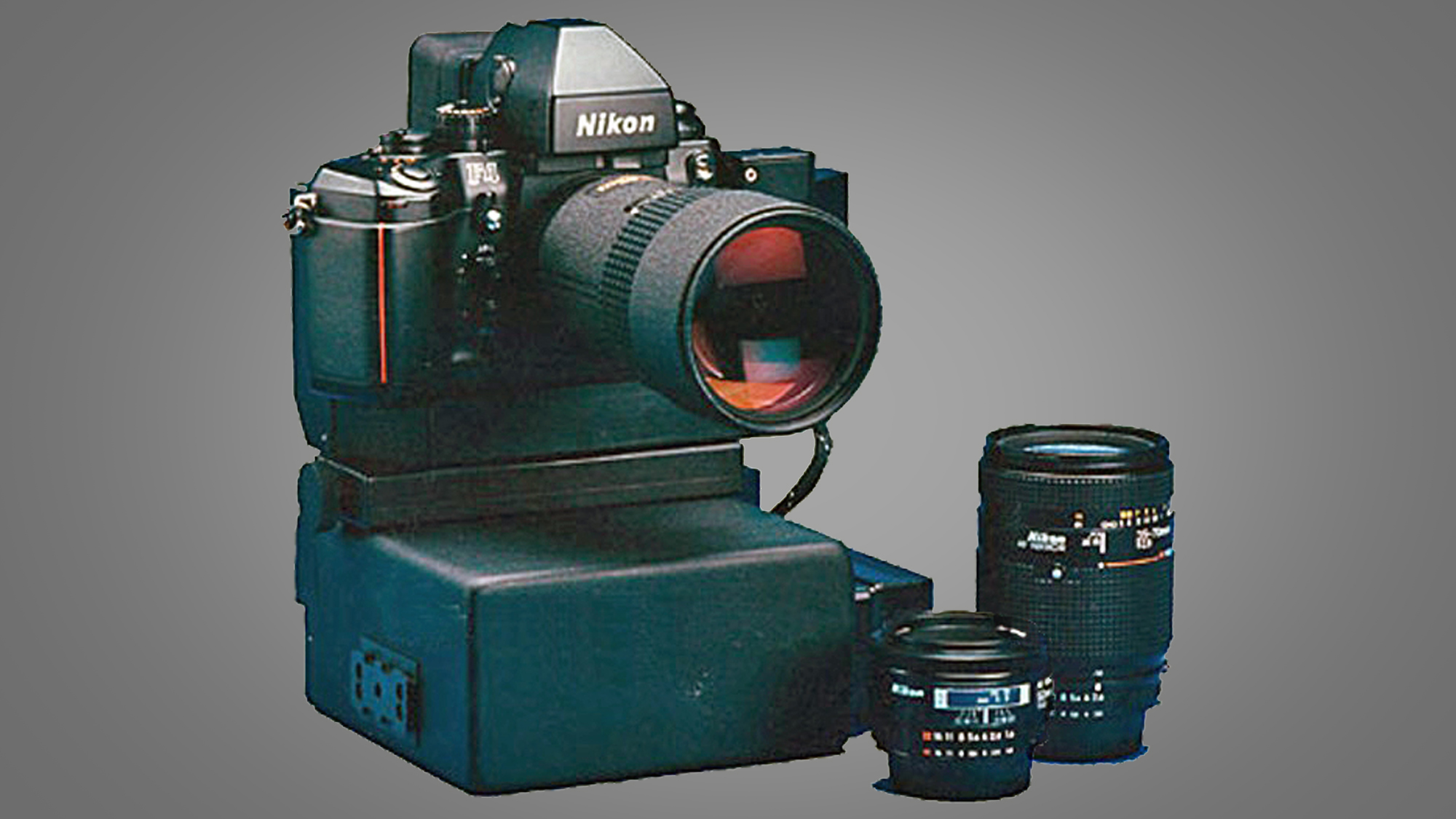
- Why it's a classic: Pictures beamed down from space
Nikon cameras have been aboard NASA space shuttles since the early 1970s, but arguably their most important collaboration was the first digital camera launched into space, the NASA Nikon F4.
Development began in 1987 and the camera's maiden voyage was aboard the Space Shuttle Discovery STS-48 in September 1991, orbiting the earth for six days with a mission to study the human effects on earth's atmosphere. Prior to the NASA Nikon F4, pictures were captured with film cameras and only seen on the orbiter's return to earth, but now they could be processed and printed within an hour.
As its name suggests, the creation was based on a modified Nikon F4 for NASA's own Electronics Box Assembly, which contained a 15mm square format monochrome CCD image sensor with 1024x1024 pixel resolution. Also within the digital component was a removable hard-disk that had storage for 40 images each with 8 bits per pixel.
Images were viewed onboard via a modified laptop and transmitted to ground using the orbiter digital downlinks at a rate of 2Mbit/s, then processed and printed at the Johnson Space Centre. Only three completed NASA Nikon F4's were ever made – Huey, Dewey and Louie – with later upgrades including a color CCD sensor with 2048x2048 pixel resolution.
- Looking for the finest Nikon cameras of today? Check out our guide to the best Nikon cameras you can buy

Tim is the Cameras editor at TechRadar. He has enjoyed more than 15 years in the photo video industry with most of those in the world of tech journalism. During his time as Deputy Technical Editor with Amateur Photographer, as a freelancer and consequently editor at Tech Radar, Tim has developed a deeply technical knowledge and practical experience with cameras, educating others through news, reviews and features. He’s also worked in video production for Studio 44 with clients including Canon, and volunteers his spare time to consult a non-profit, diverse stories team based in Nairobi. Tim is curious, a keen creative, avid footballer and runner, and moderate flat white drinker who has lived in Kenya and believes we have much to enjoy and learn from each other.